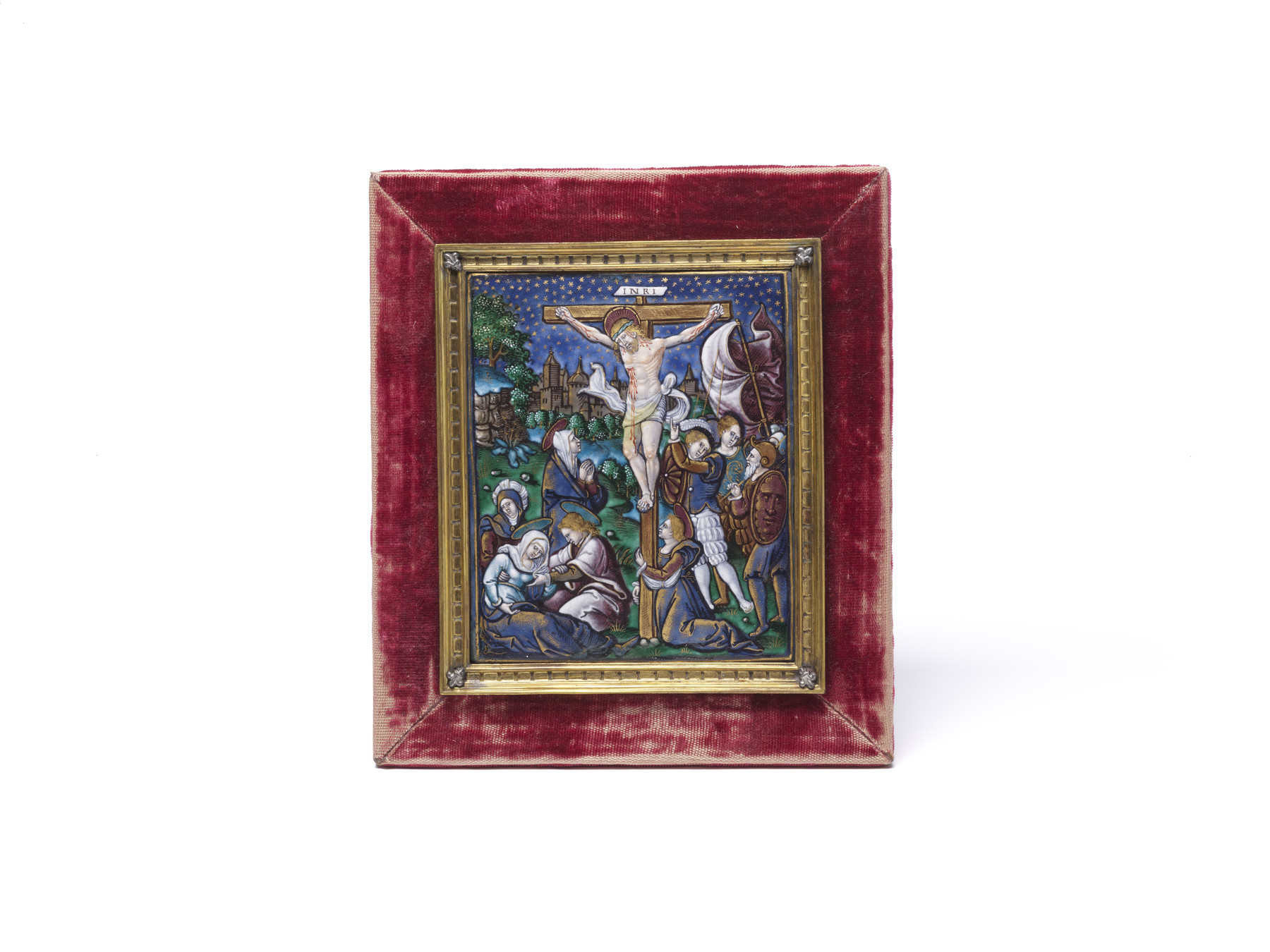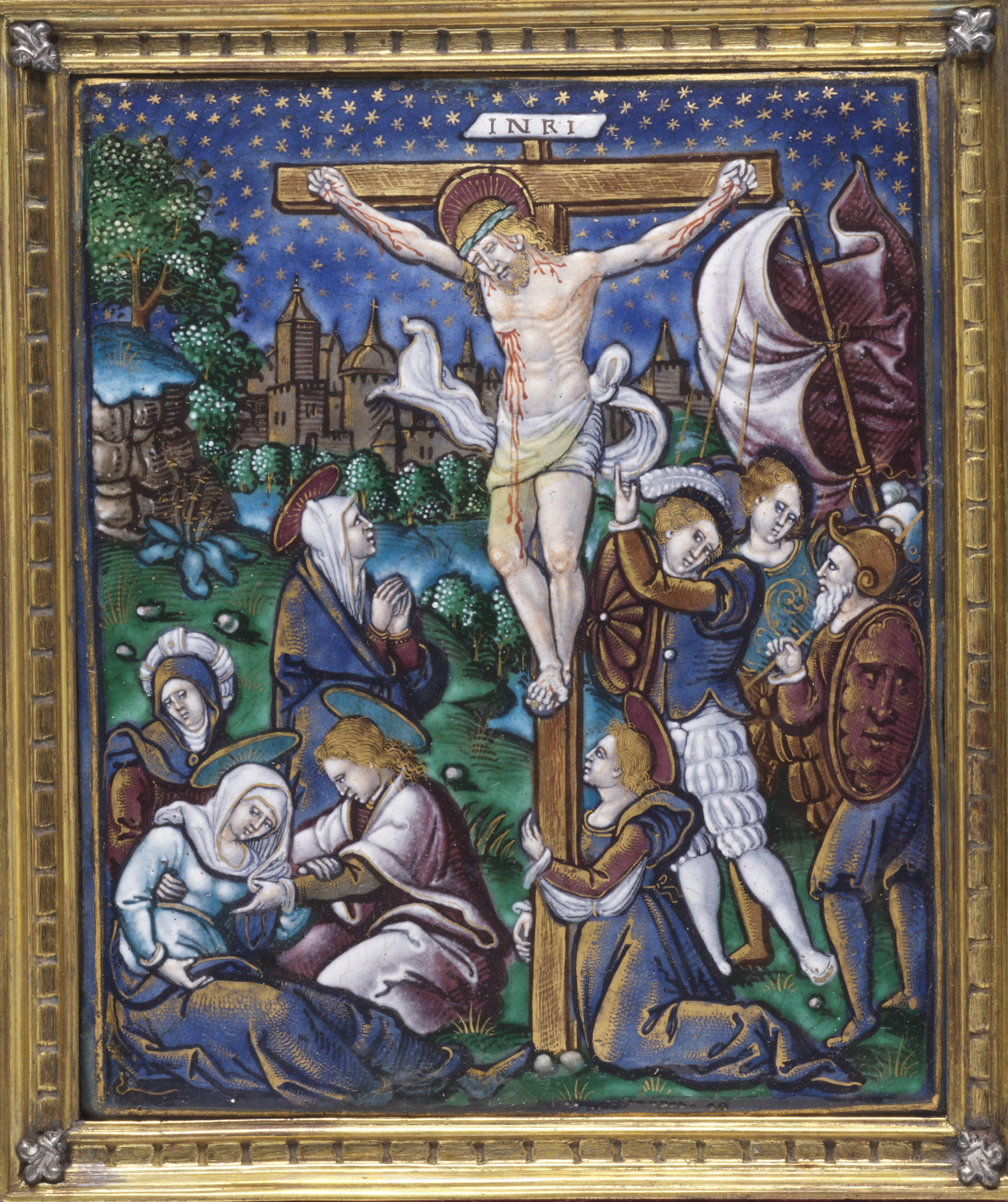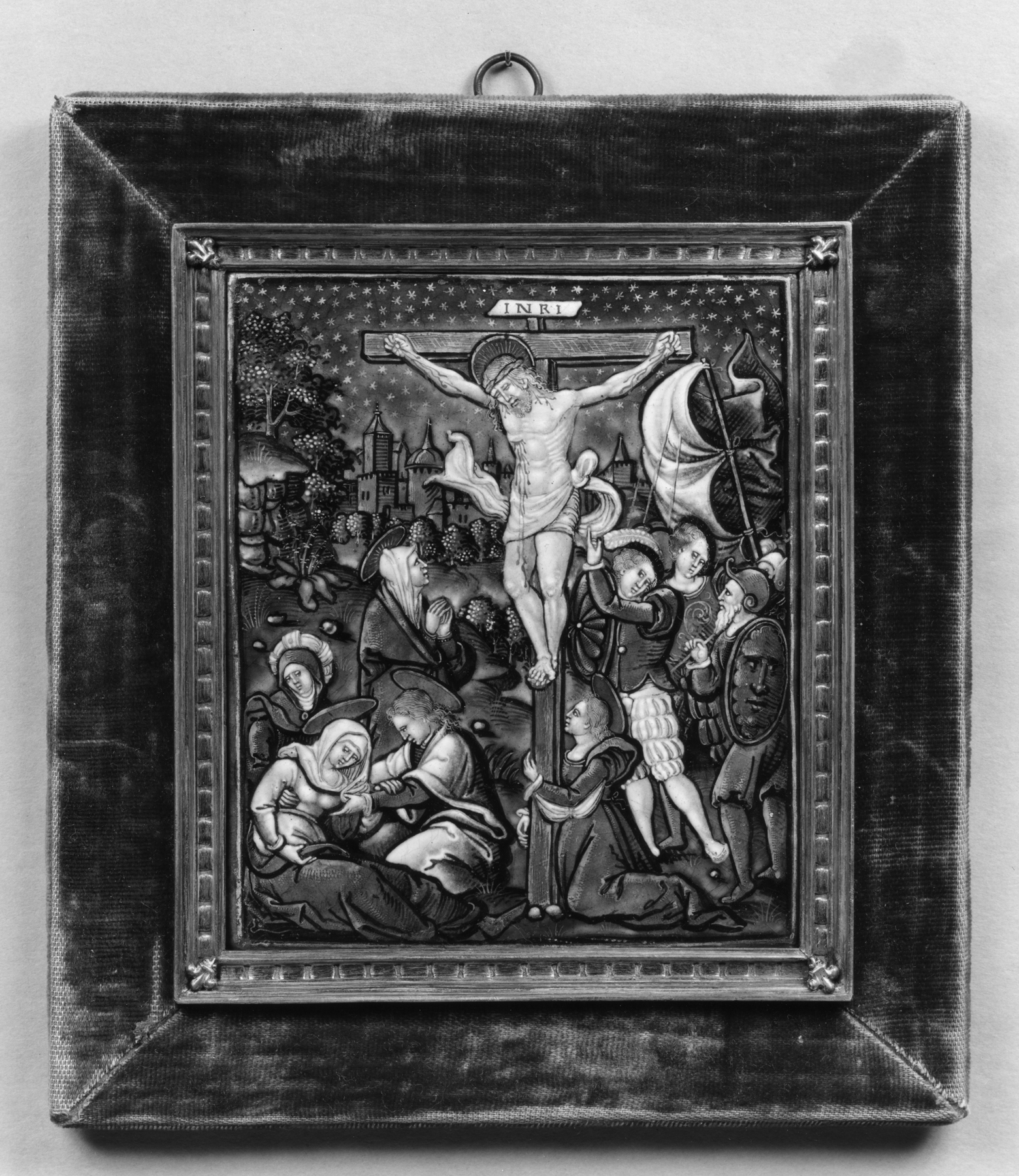The Crucifixion
(Renaissance Europe )
Christ is dead on a tau-cross with the titulus INRI. At the left St. John and one of the Marys assist the swooning Virgin. Another holy woman stands in adoration of Christ. On the right, Mary Magdalene kneels and embraces the shaft of the cross. The Centurion, lifting his left arm in a contrapposto gesture to bear witness that Christ is truly the son of God, is represented as a youth with a feathered cap, a short-sleeved doublet, slashed breeches, and round-toed shoes. Nearby, an elderly helmeted man bearing a shield adorned with a cusped mask carries a lance over his right shoulder. Beyond is another youth wearing a scroll-embroidered doublet and slashed breeches, and a group of soldiers with lances and a swelling banner. In the background are clusters of trees, a hillock and the city of Jerusalem, The sky is studded with stars.
Provenance
Provenance (from the French provenir, 'to come from/forth') is the chronology of the ownership, custody, or location of a historical object. Learn more about provenance at the Walters.
Henri Daguerre, Paris [date and mode of acquisition unknown]; Henry Walters, Baltimore, 1930, by purchase; Walters Art Museum, 1931, by bequest.
Conservation
| Date | Description | Narrative |
|---|---|---|
| Examination | examined for condition | |
| 4/13/1964 | Treatment | cleaned; coated |
| 5/18/1965 | Treatment | cleaned |
Geographies
France, Limoges (Place of Origin)
Measurements
H: 4 15/16 x W: 4 3/16 in. (12.5 x 10.6 cm)
Credit Line
Acquired by Henry Walters, 1930
Location in Museum
Not on view
Accession Number
In libraries, galleries, museums, and archives, an accession number is a unique identifier assigned to each object in the collection.
In libraries, galleries, museums, and archives, an accession number is a unique identifier assigned to each object in the collection.
44.204








